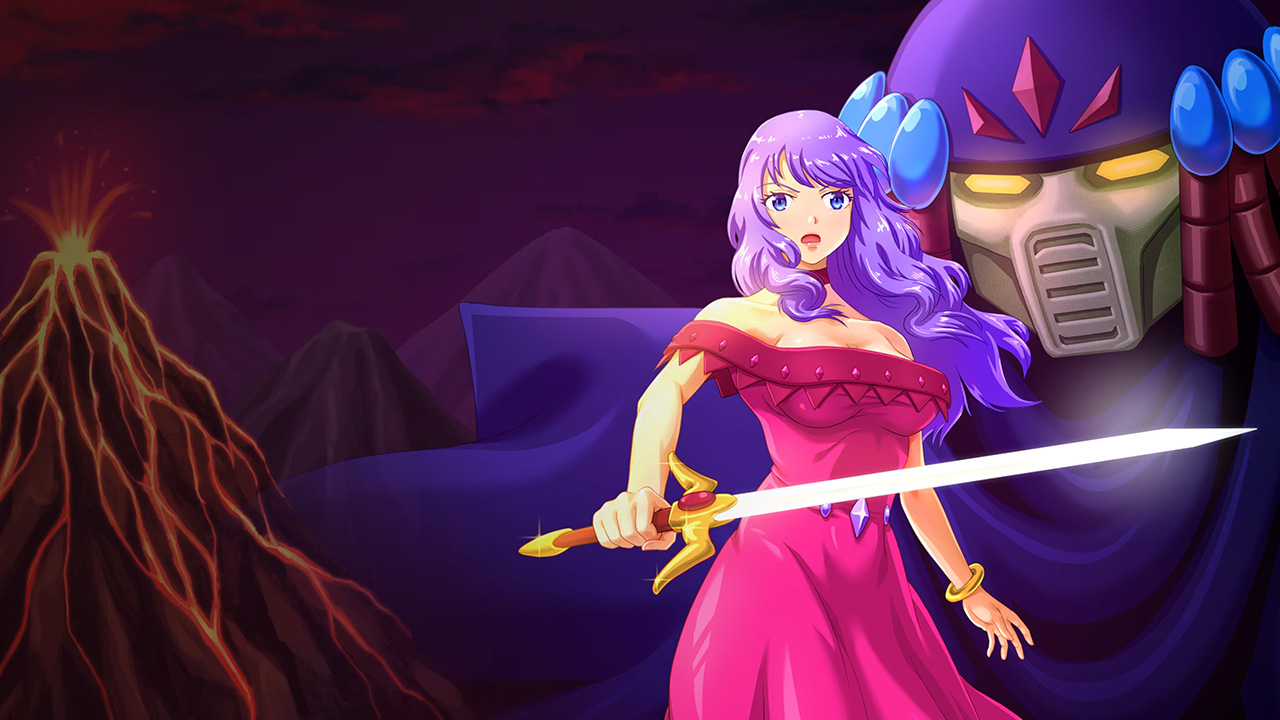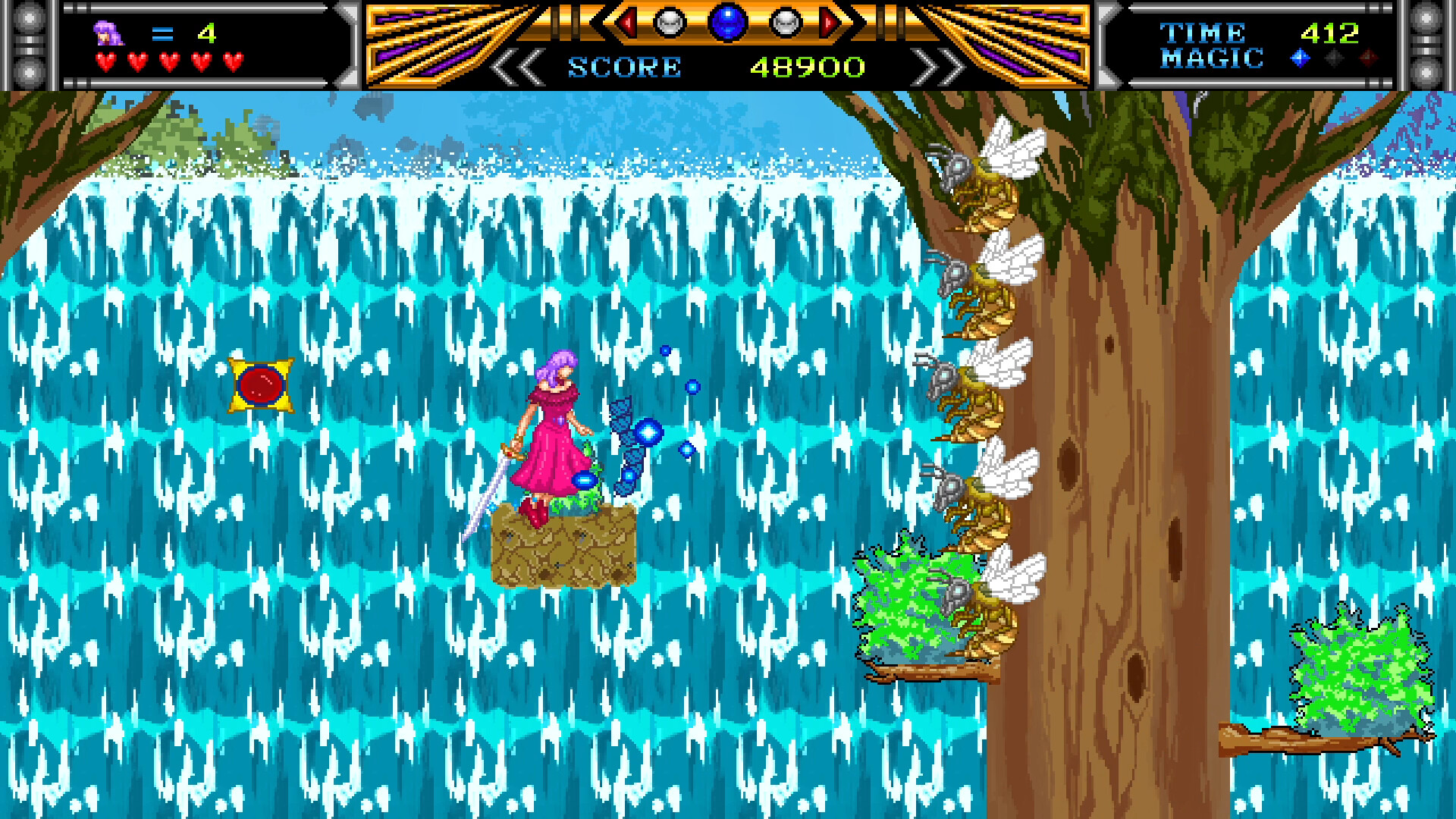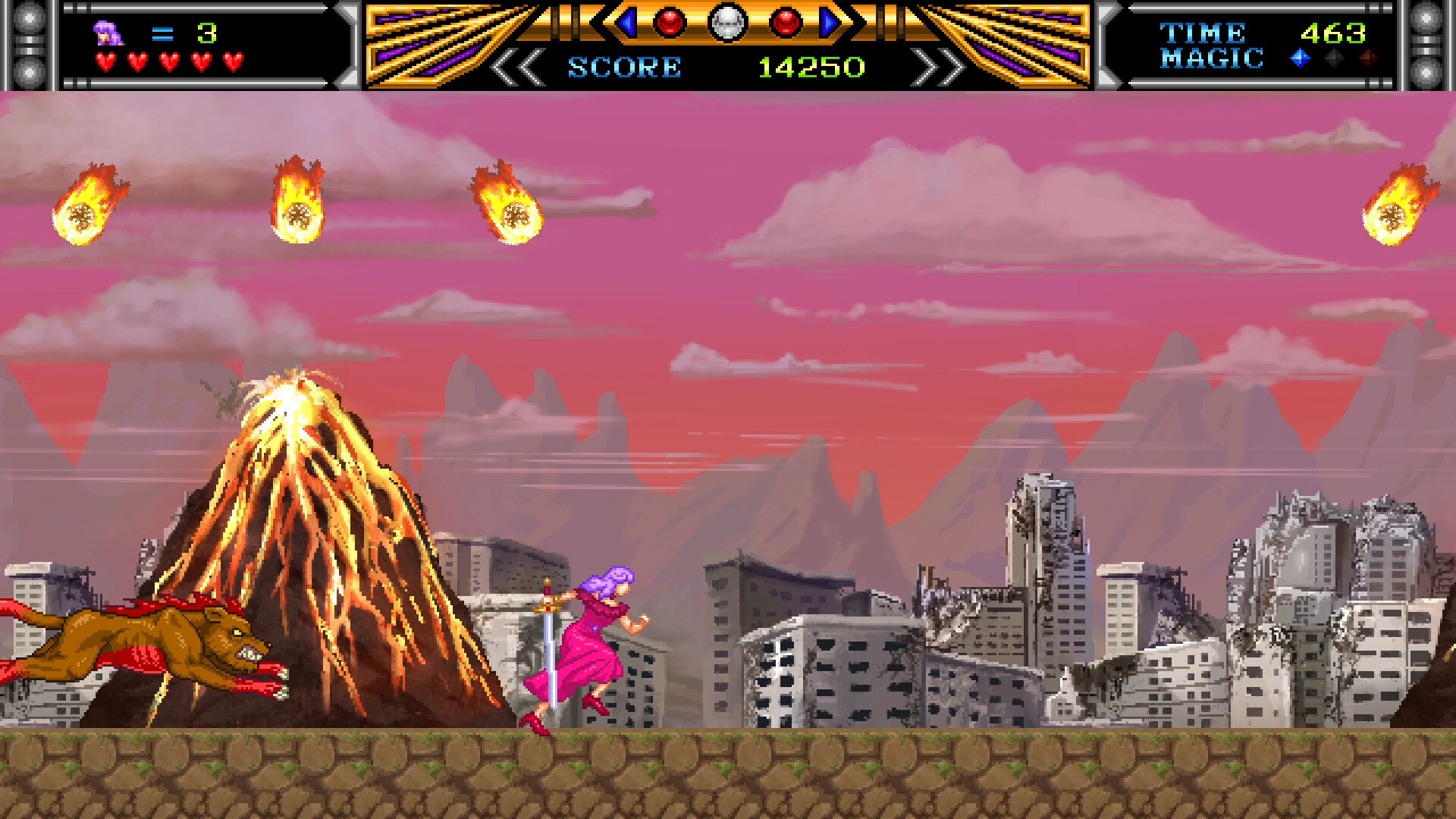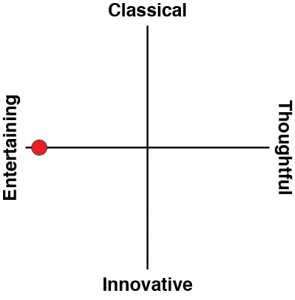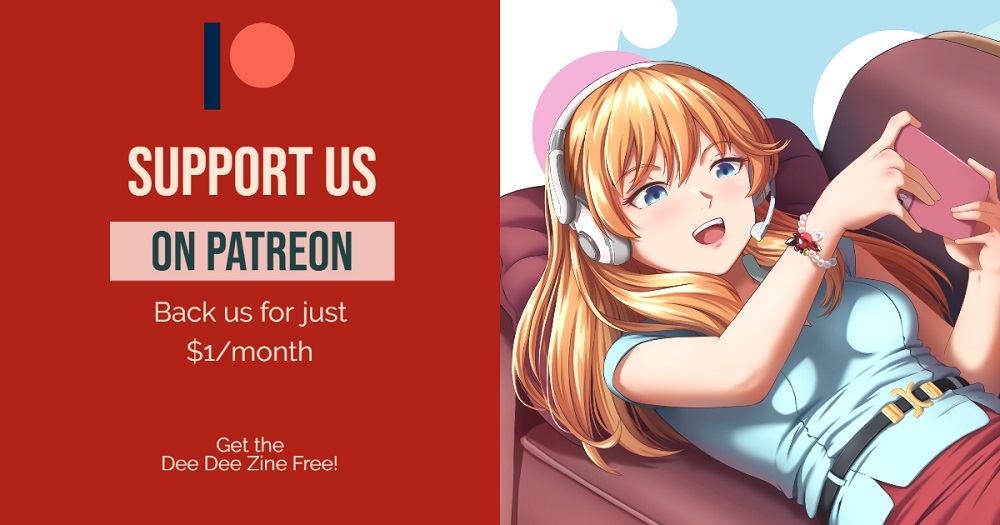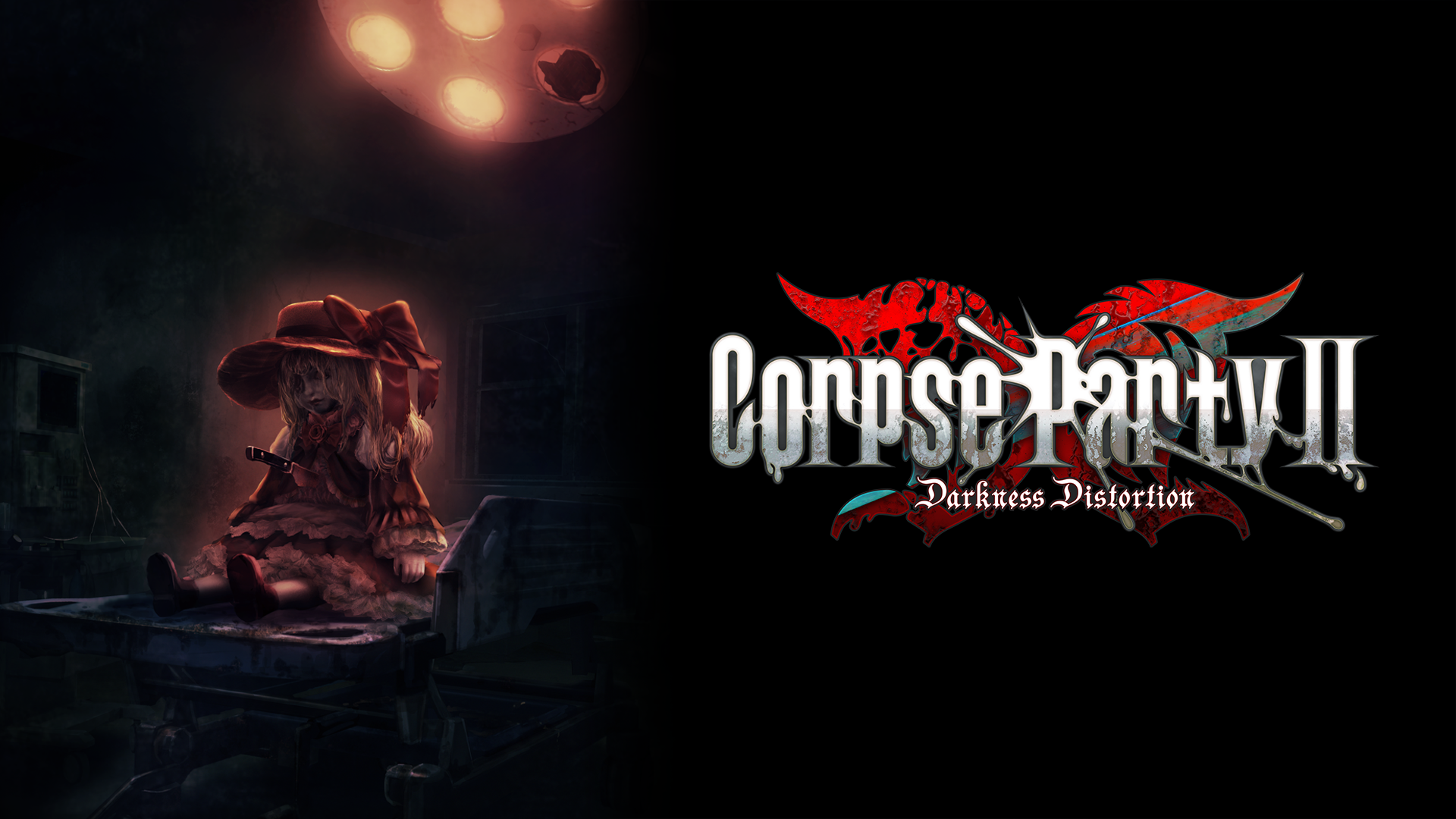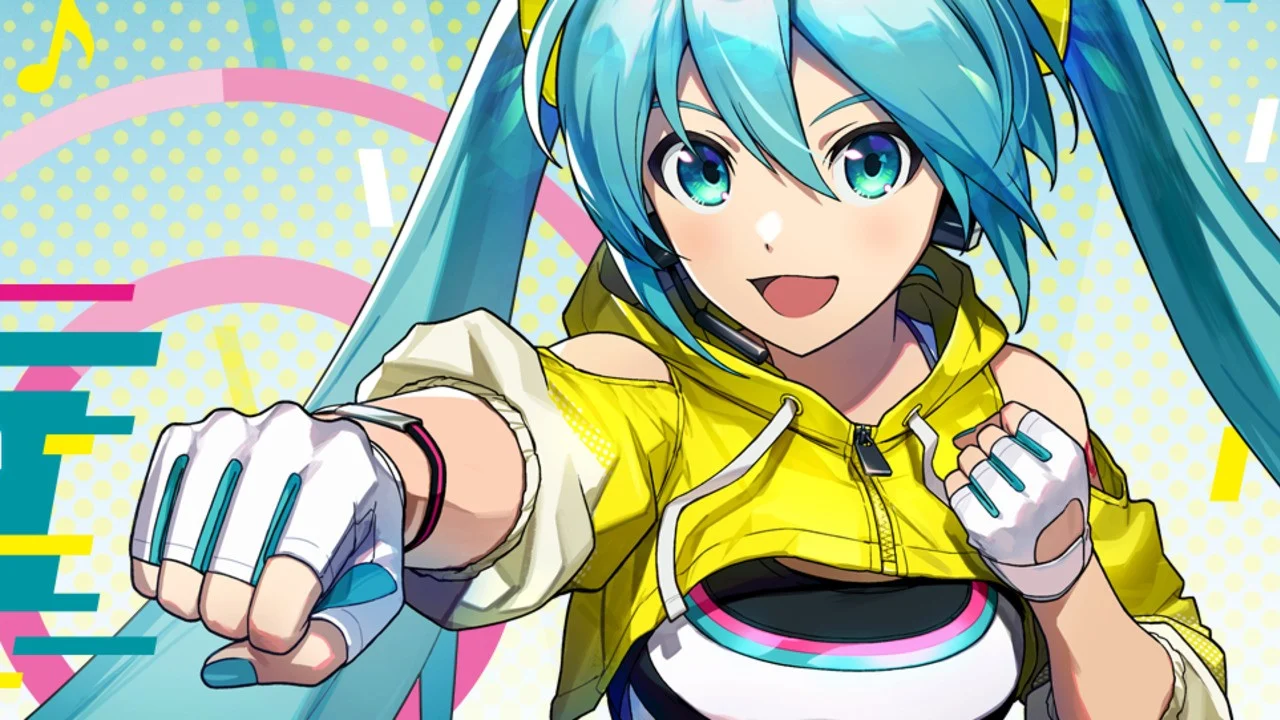Violet Wisteria is two things – firstly, it’s a brute of a game that wears its old-school homage on its sleeve. It’s also heavily inspired by the classic Valis series of fanservicey magical girl platformers.
Things start off really well with a story sequence pulled directly from the PC-98 era of design. Gorgeously rendered art pieces explain the situation that Wisteria is in, and how she came to wield a powerful weapon, the Violet Sword, and become a mighty defender of the people. There’s also a light dash of fanservice thrown in for good measure. I told you the game was clearly inspired by Valis.
After that, you’re dropped into a series of platforming stages – eight to be precise, and it’s here that Violet Wisteria starts to form an identity of its own. The core mechanic that powers this game is that there are three different “attacks” that the sword is capable of, each of which is tied to a different colour. Each enemy has one colour. You need to hit the enemy with that colour to damage it.
But sometimes you’ll want to hit it with a different coloured attack, because that will cause Wisteria to “bounce”, and fly across the screen. Frequently you’ll run into areas where there’s no way that Wisteria’s standard jump will get her to the next platform. At those times you’ll need to master the bounce mechanic, while still dodging enemy attacks.
It can be difficult. Enemies aren’t particularly fast or aggressive in Violet Wisteria, but this triangle system of attacks means there’s some juggling involved to navigate the gauntlet, and it can be difficult to avoid traps and enemy projectiles while also figuring out what attack to hit an enemy with, and line up the “bounces” so you can progress through the level. There’s a timer ticking down all the while, and while it’s generous, again, there’s a complexity to navigating this game, thanks to that triangle, that tends to slow progress down. This is not a platformer for the speedrunner, and nor is it designed for them.
Unfortunately, Violet Wisteria is a little too slavish in its homage to platformers of the 90s, and this makes it difficult to get along with at times. Firstly, the platforming can require some substantial precision from players at times, but Wisteria’s animation is more clunky than more modern players will be comfortable with. Remember the classic Castlevania games? The platforming in this feels a lot like those, for better or for worse. It’s authentic, but sometimes homages are better served by being visually and thematically a homage, while modernising the underlying structure and mechanics.
There’s also some imprecision in terms of attack ranges which means enemies and Wisteria alike tend to get hit and damaged by things that don’t look like they should have the kind of range they do. Most critically of all, however, there’s very little checkpointing. If Wisteria falls down a hole (as she often will), she’ll be sent back to the start of an area, which can mean some significant backtracking at times.
Platformer fans that are nostalgic for the bygone eras of the genre will have no issue with any of this, and it’s fine that the game has been made with that audience in mind. The triangle attack system is a nice spin on things which, as I said, gives the game its own identity too. Unfortunately, Violet Wisteria really needed to invest a bit in the art. While the cut scenes are gorgeous, there are not that many of them and for the most part, you’re looking at 2D platforming that looks like it borrowed a lot from Game Maker libraries. Enemies are dinky and unmemorable, environments tend to be cobbled together in an incohesive manner, meaning that they don’t do a good job of selling the exotic worlds that you’re meant to be exploring, and Wisteria herself is, unfortunately, wearing a very dull costume. It works in the cut scenes, because it’s a gorgeous full-length dress. However, when that’s turned into a retro-style sprite, the character just looks like one long, pink musk stick. Valis’ body-hugging armour and micro-skirt wasn’t just great because it was fan servicey. It allowed the artists to use several different colours and help to define the character. It’s something Violet Wisteria’s character artist should have cribbed notes from.
Violet Wisteria is very transient, ultimately. It is enjoyable, yet also forgettable. Once you get into the groove with the triangle combat system, the pseudo-puzzle quality to the platforming will keep you on your toes and get you to think about movement and combat in a different way. It’s a clever quirk and the developers have implemented it well. The art in the cut scenes is also gorgeous and I’d like to see the developers expand on this character and her world in a visual novel or similar. However, the platforming itself is clumsy, the effort that went into the visuals in the cut scenes is not reflected in the gameplay, and ultimately Violet Wisteria is only going to appeal to the hardest of hardcore retro platforming fans.
Buy the hottest games with Amazon.
By purchasing from this link, you support DDNet.
Each sale earns us a small commission.
